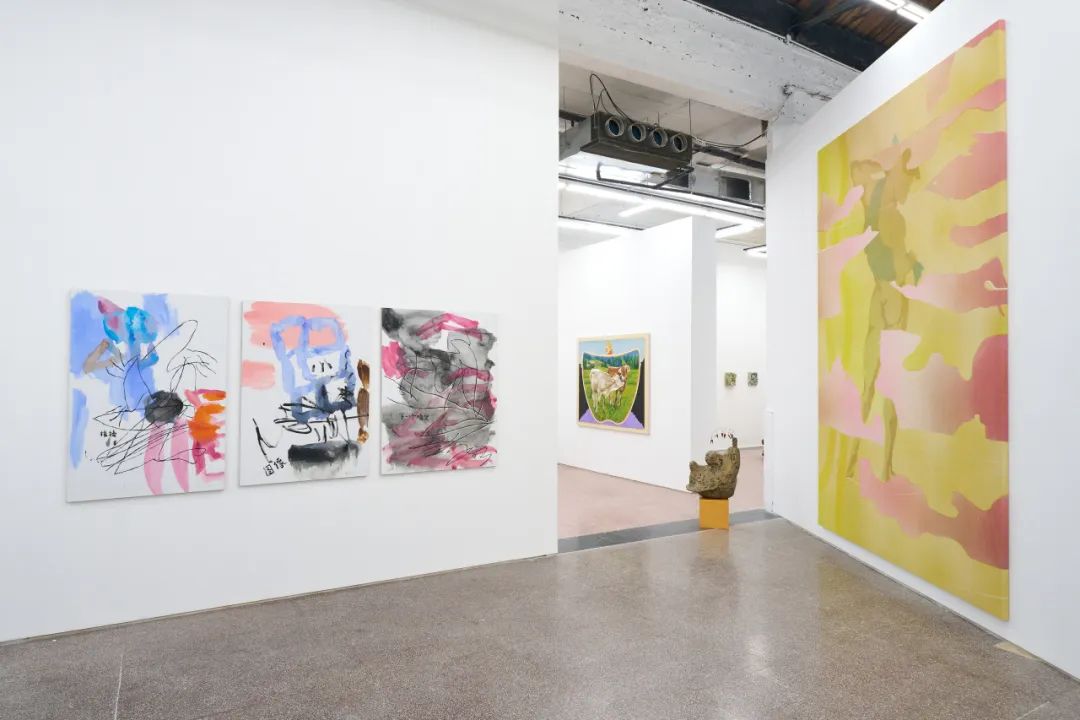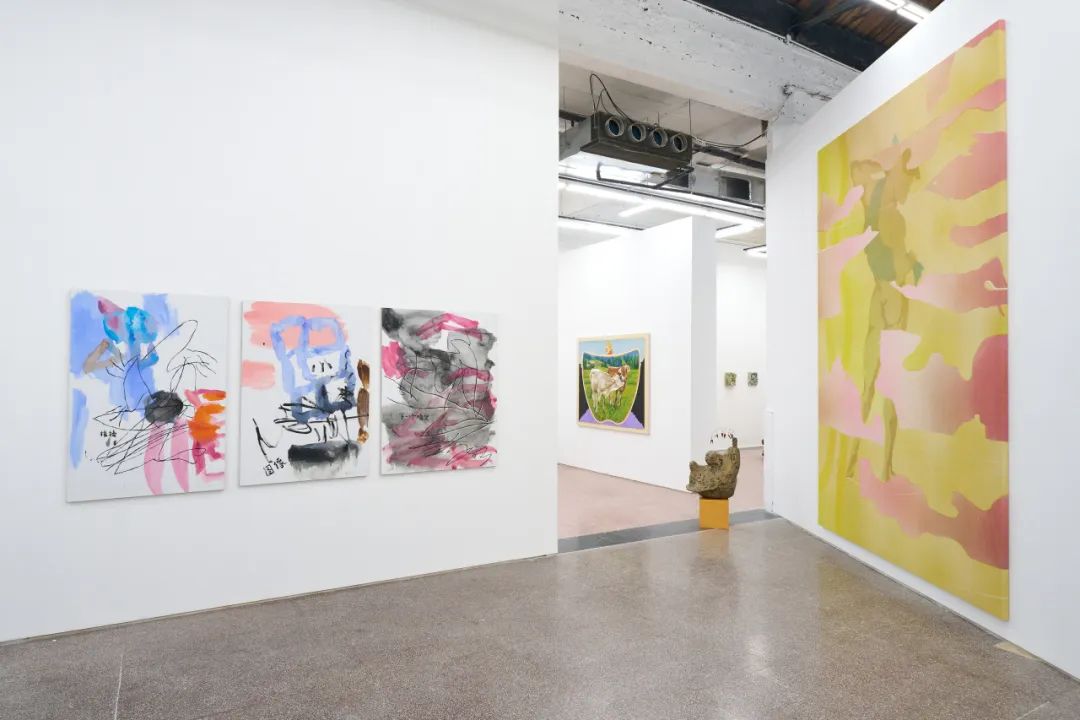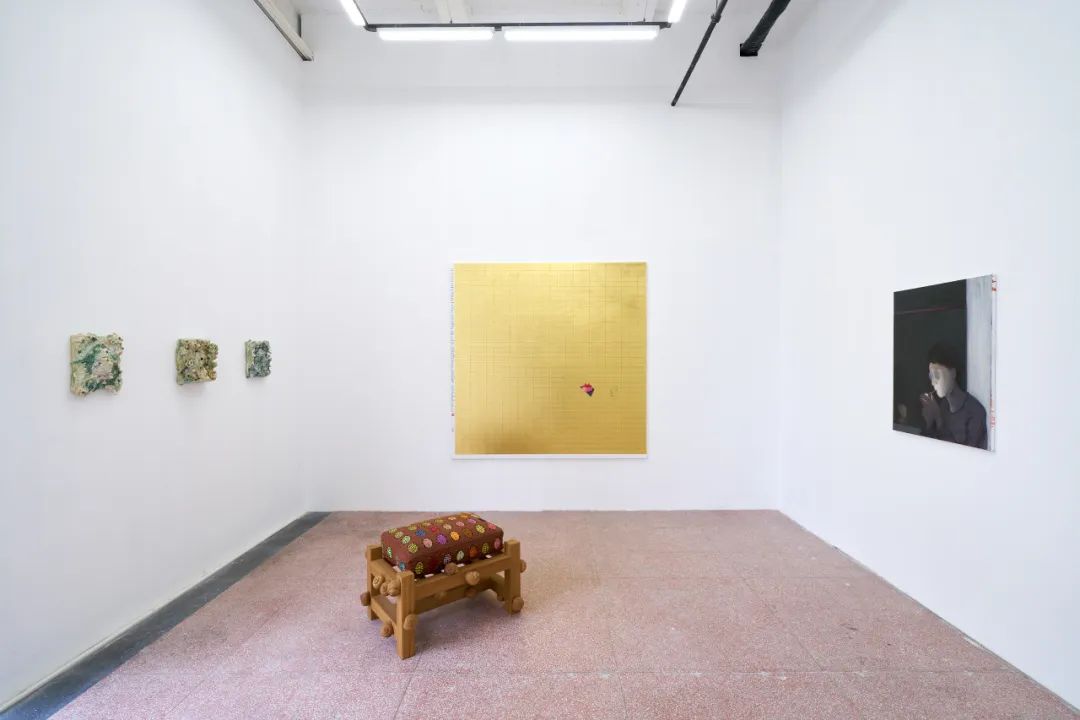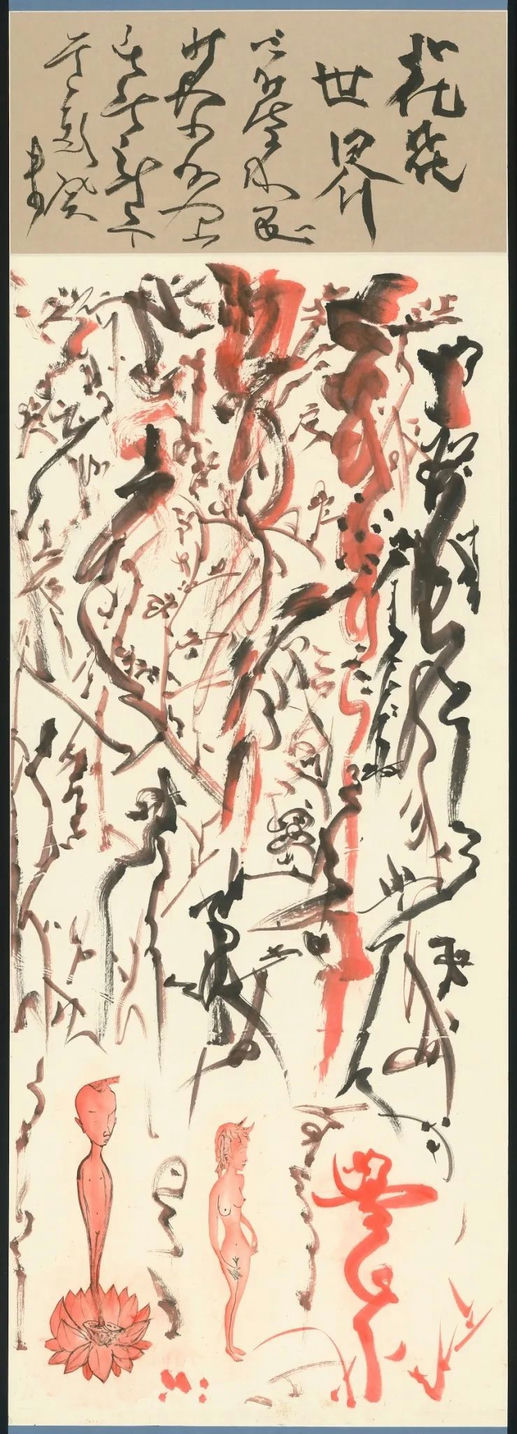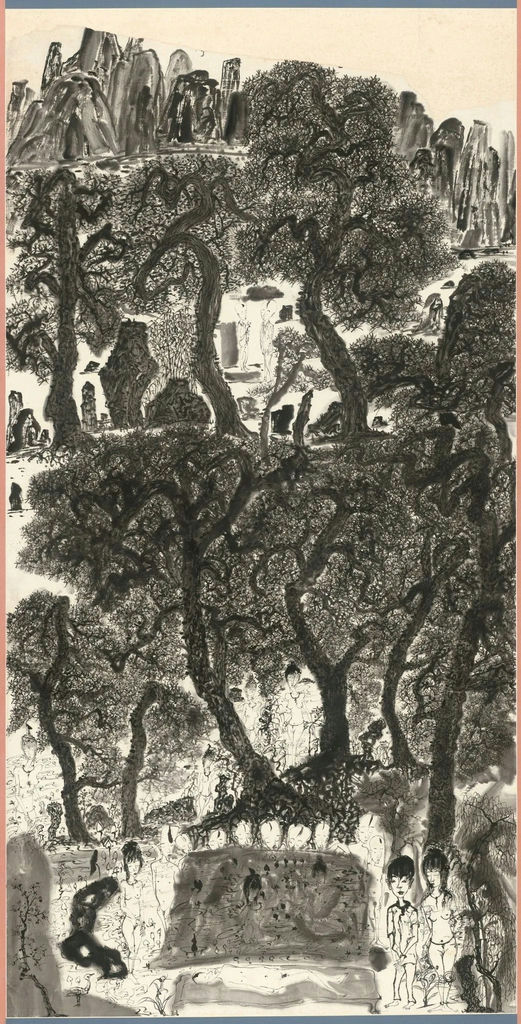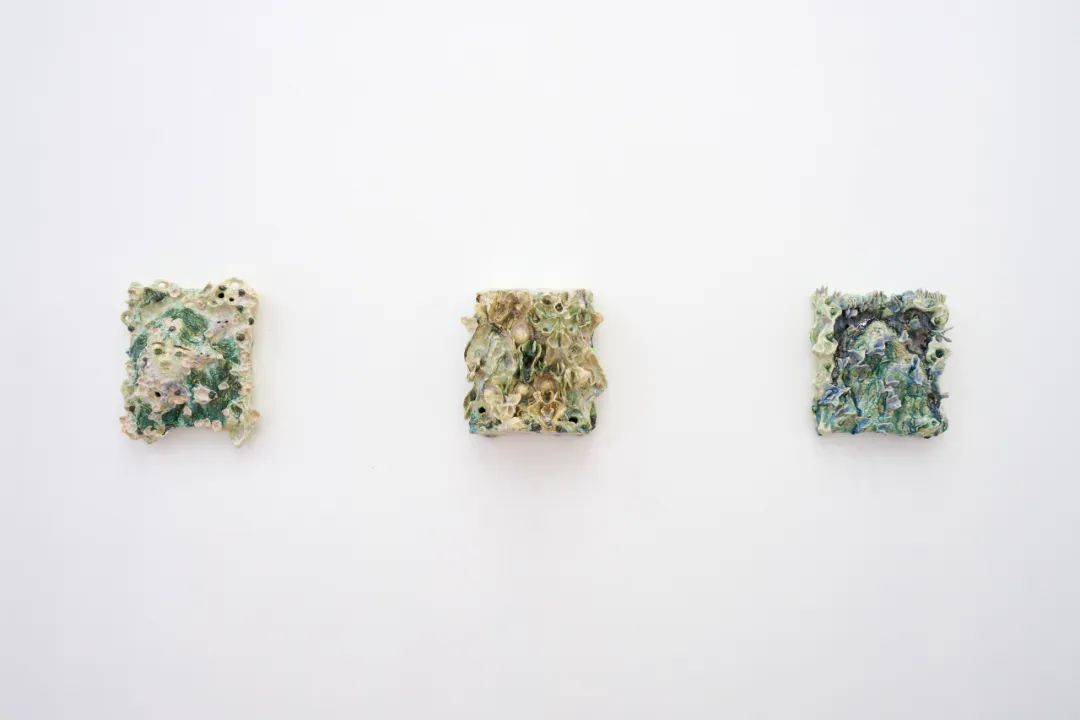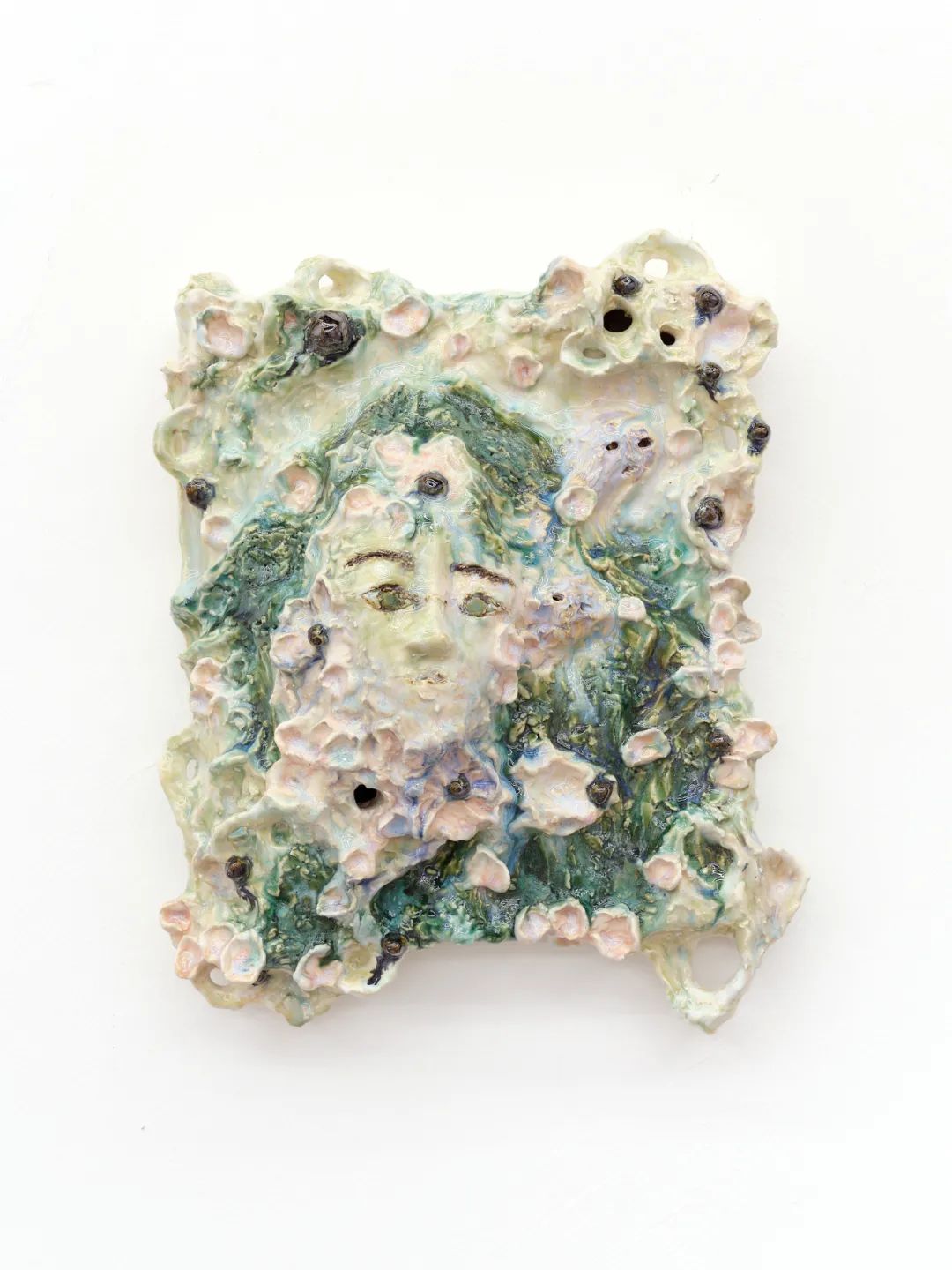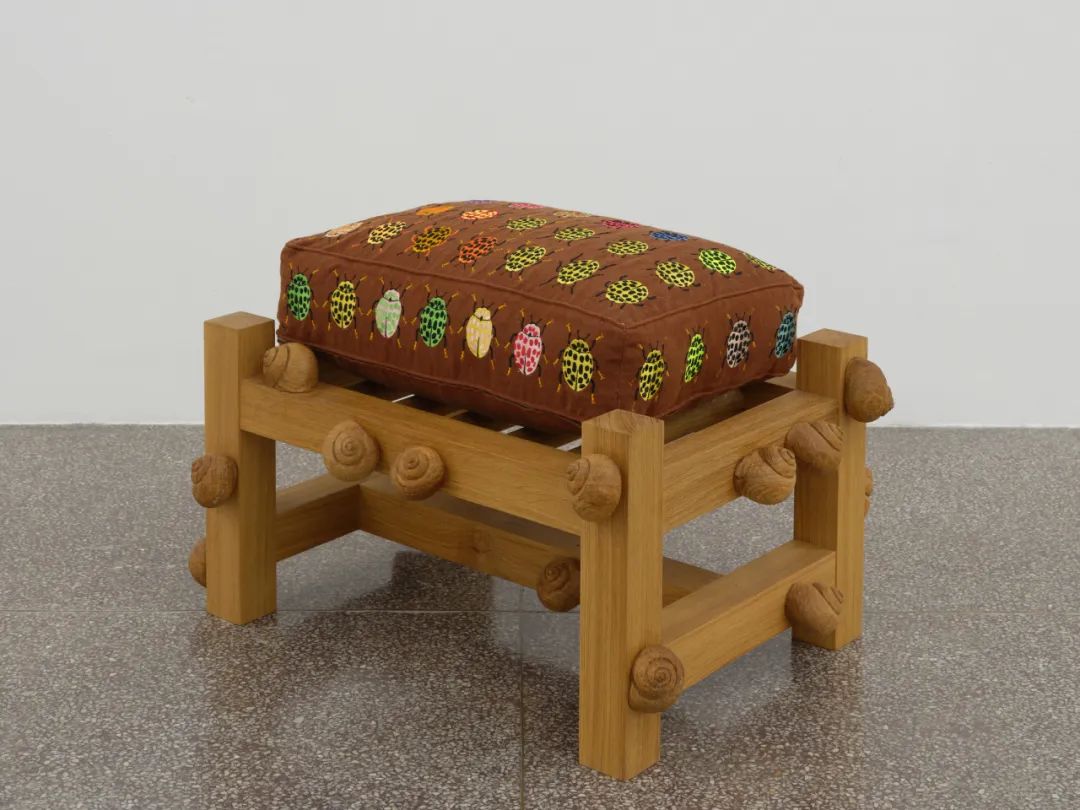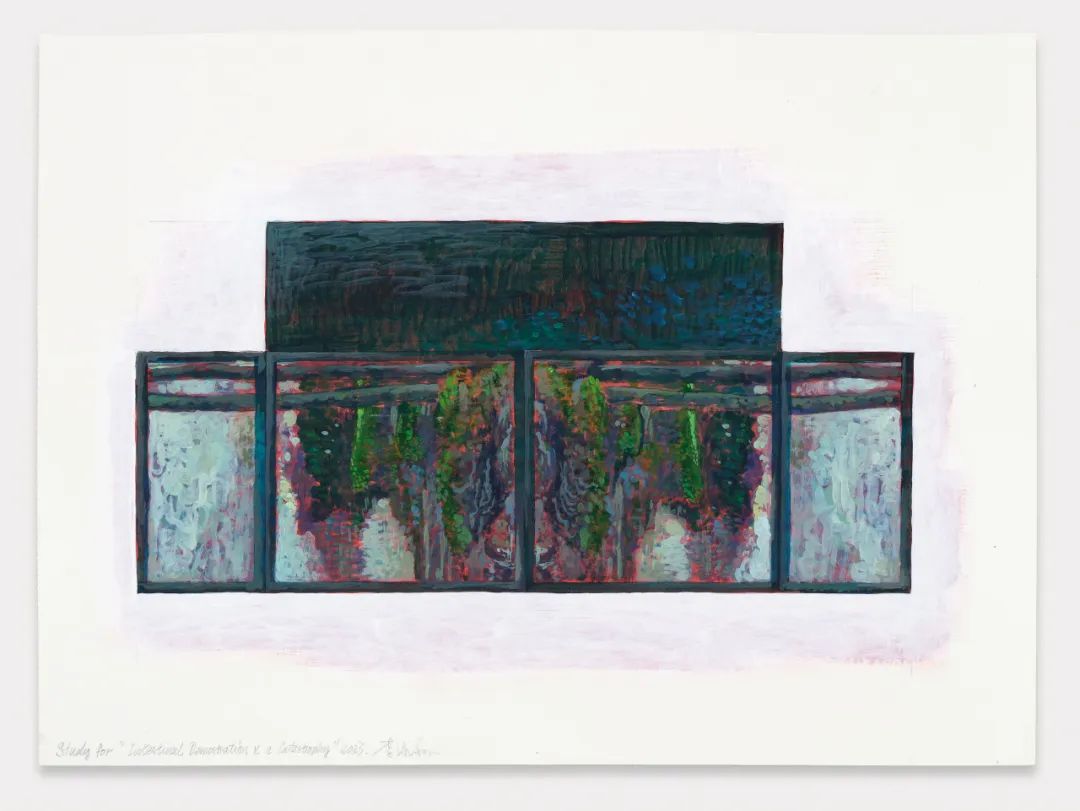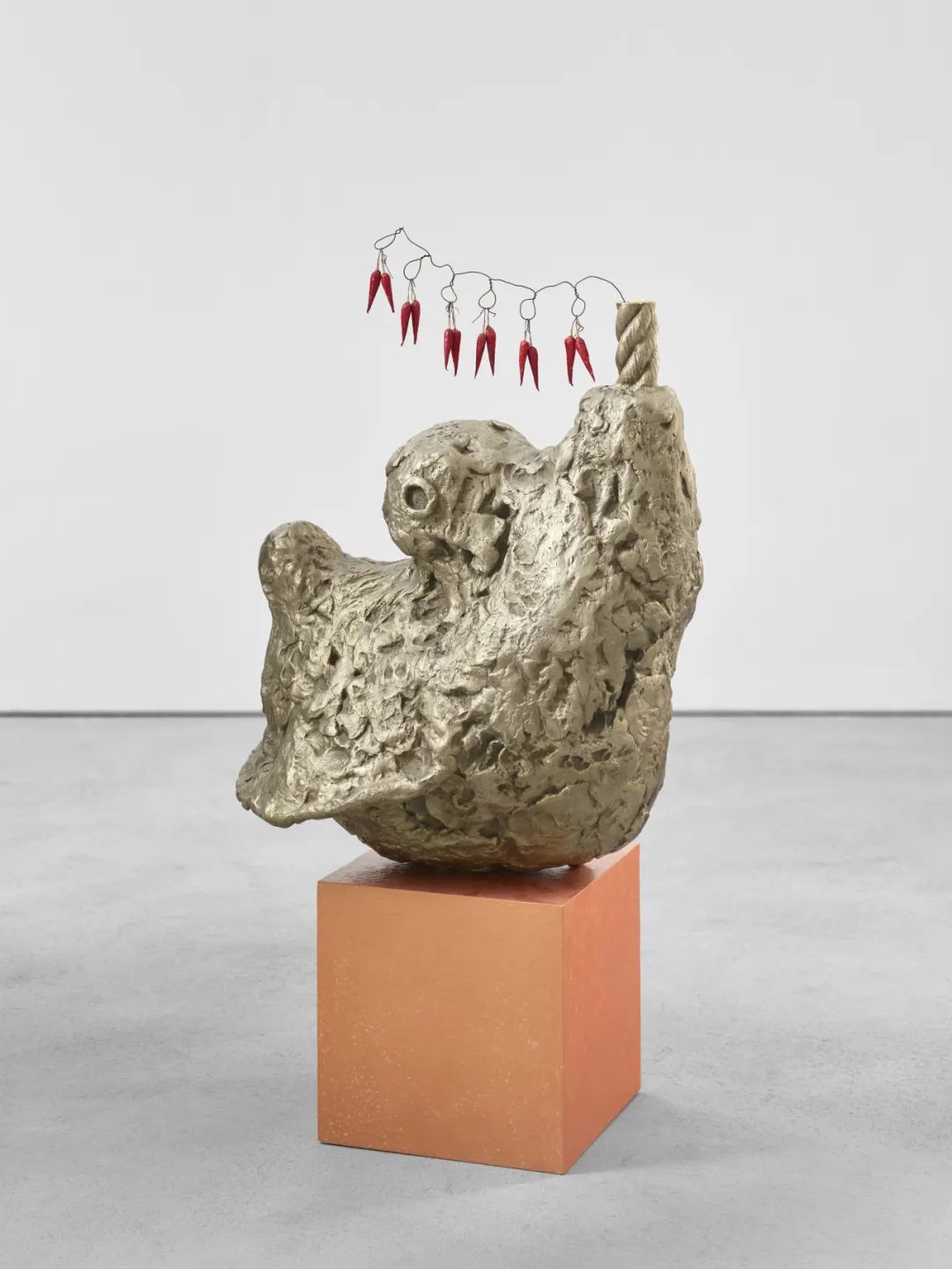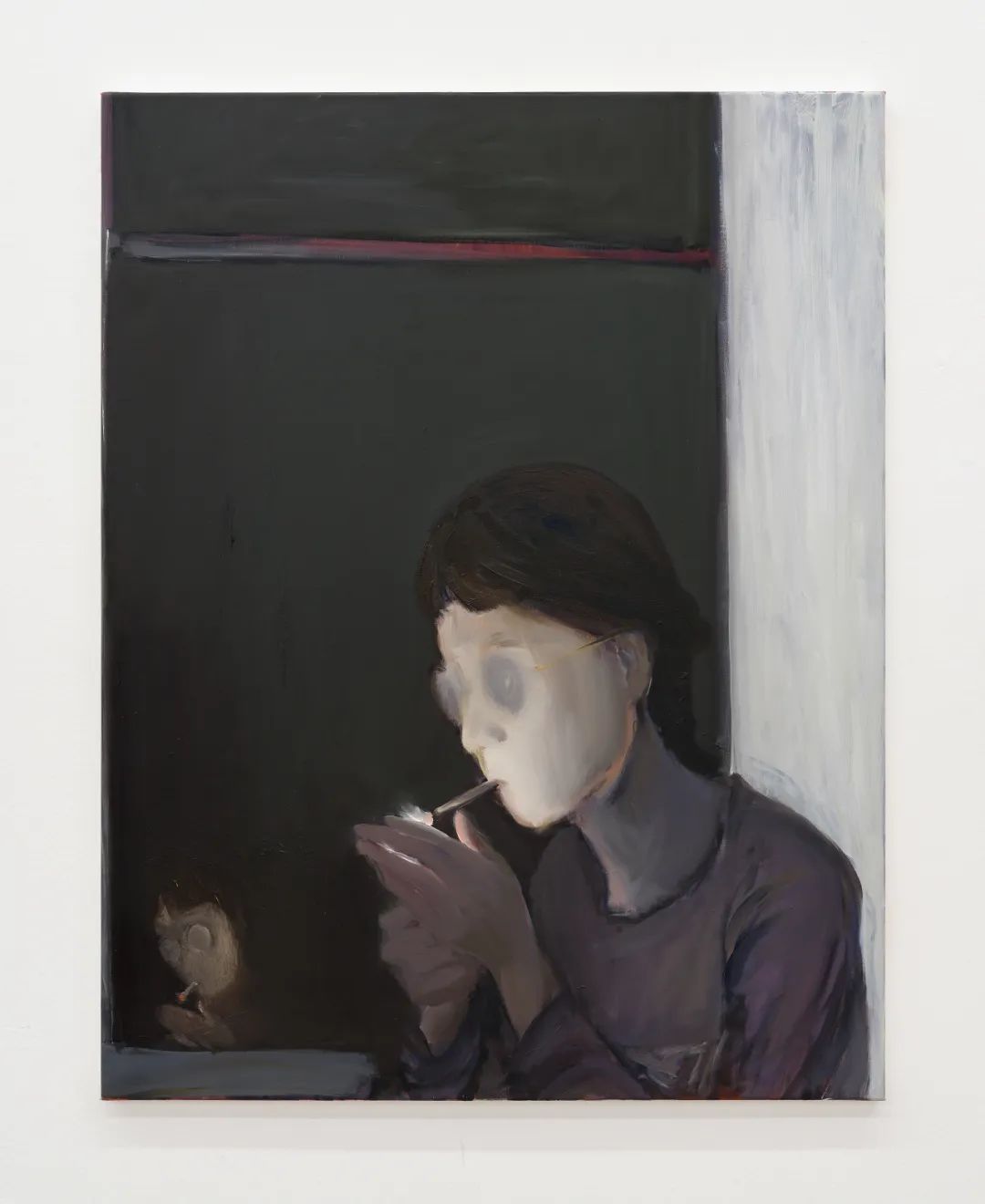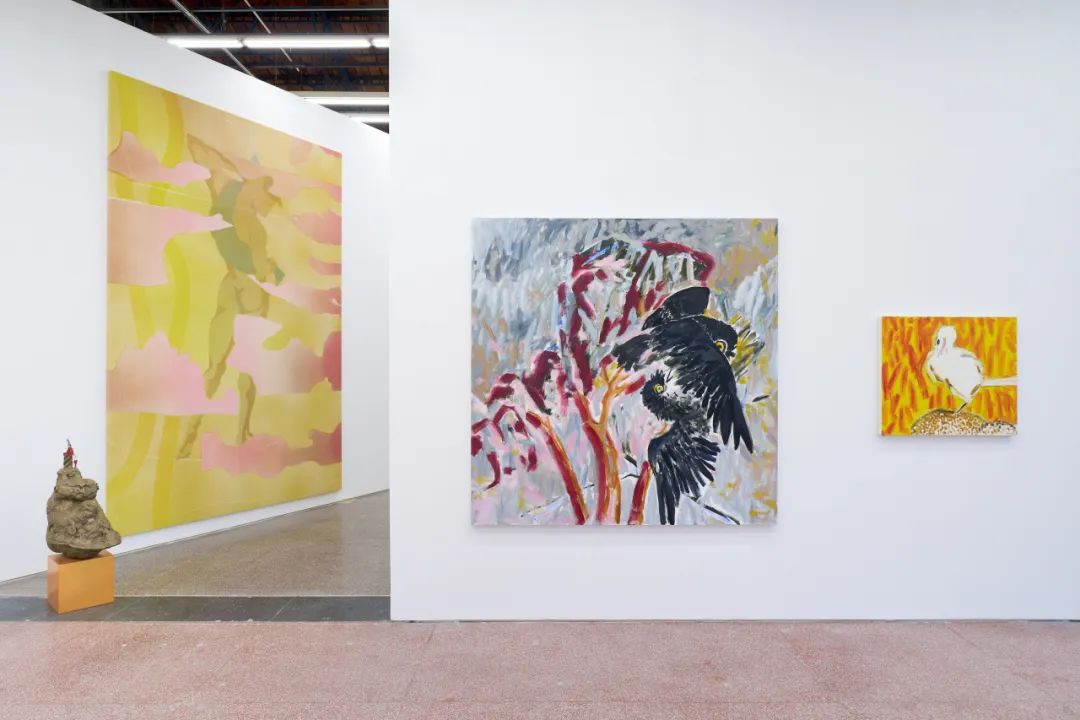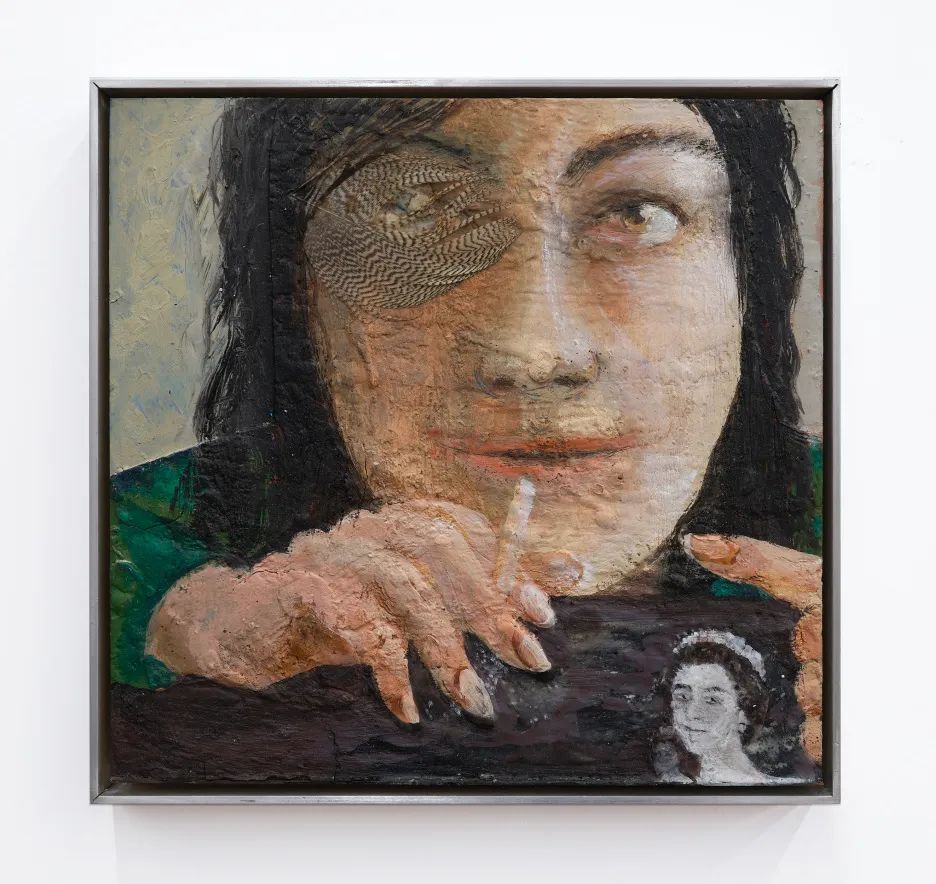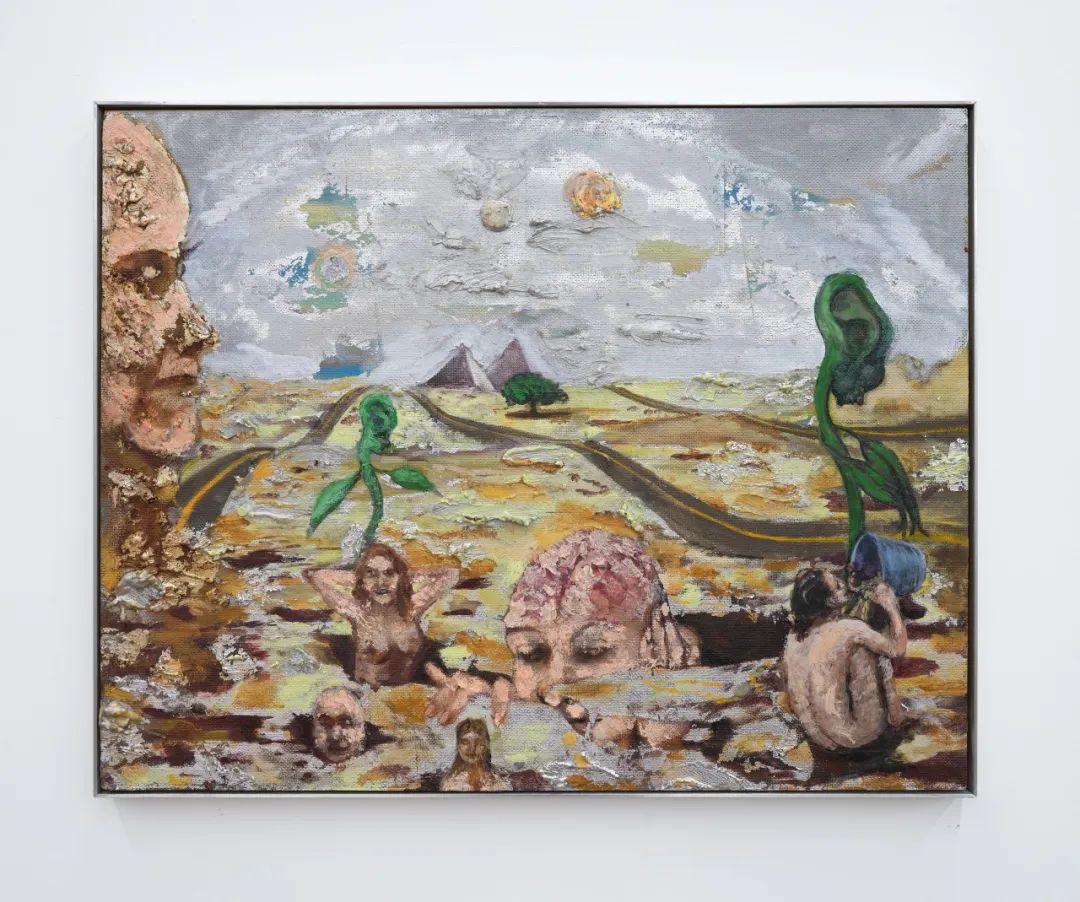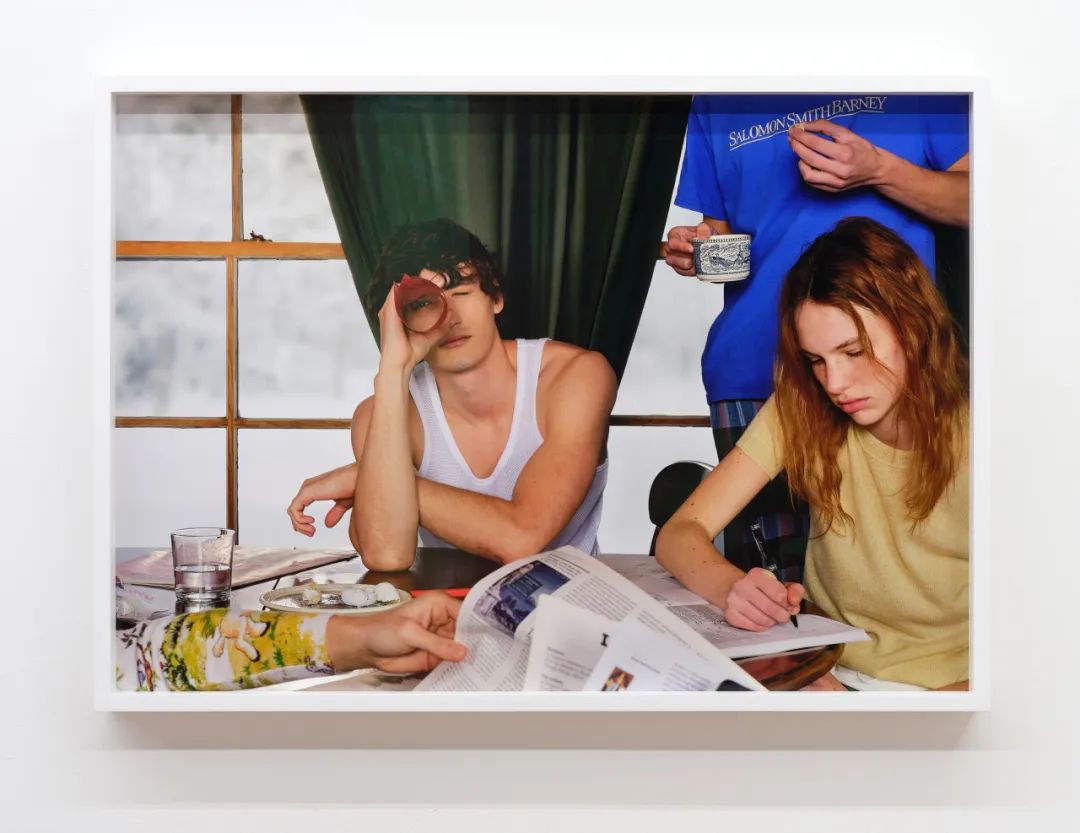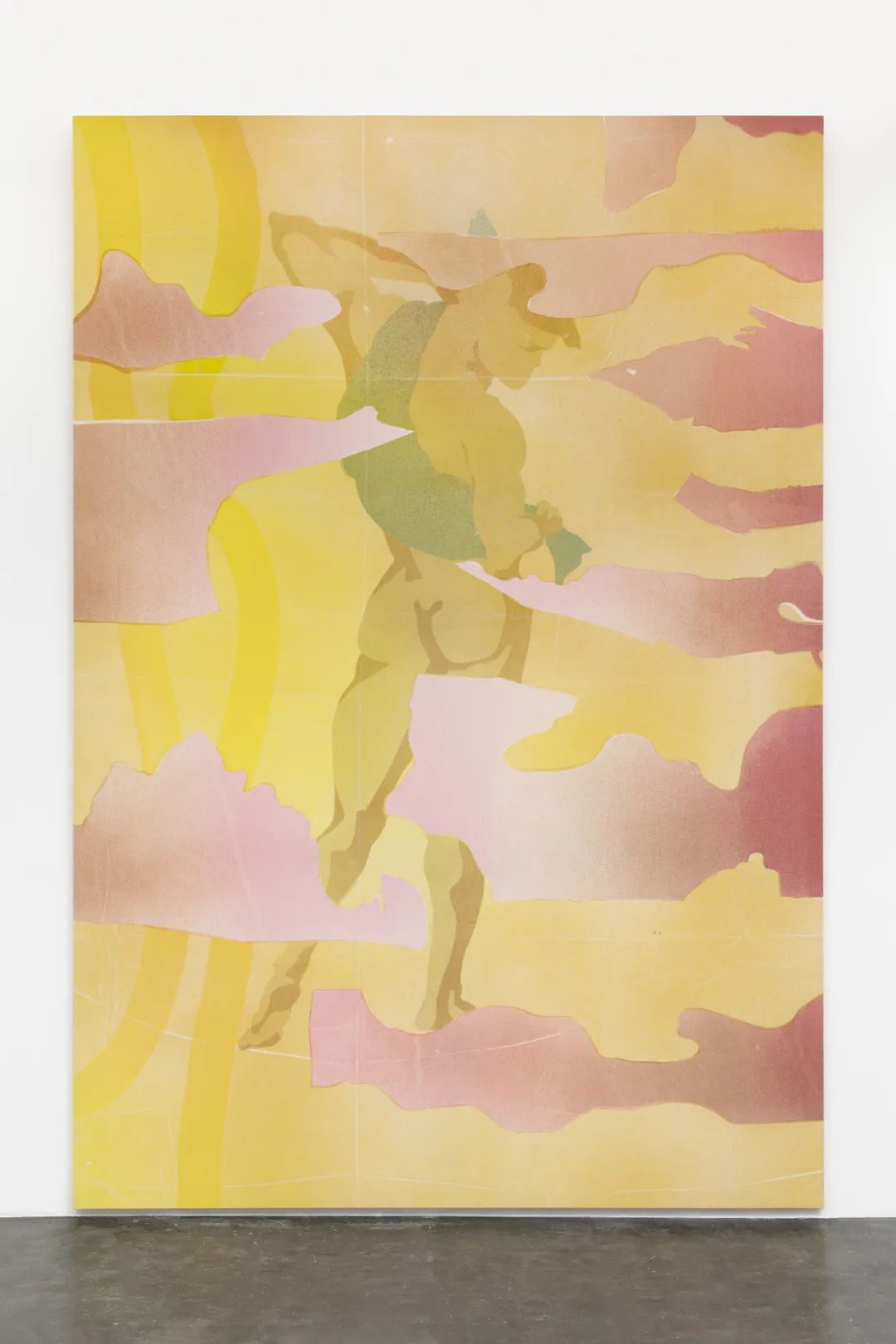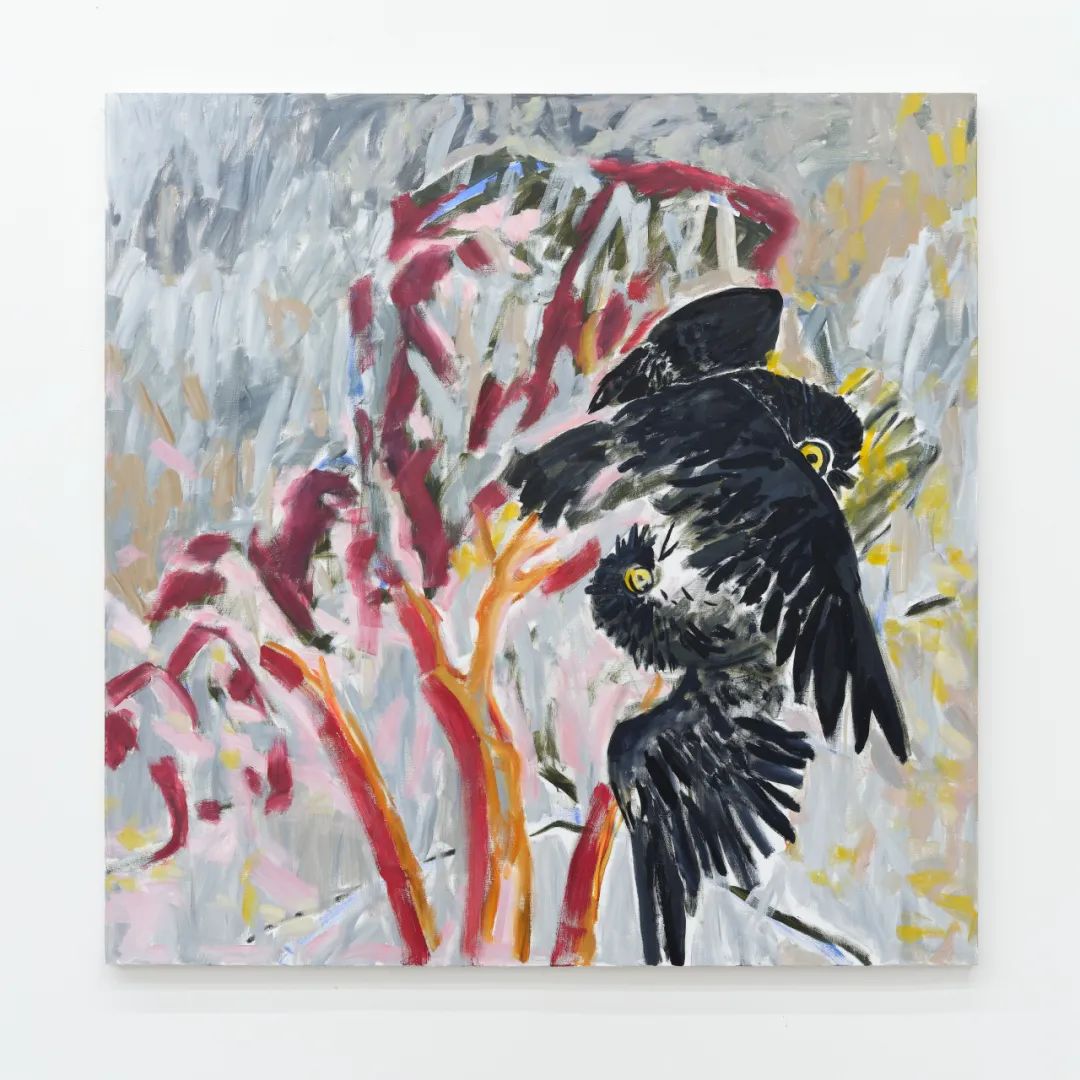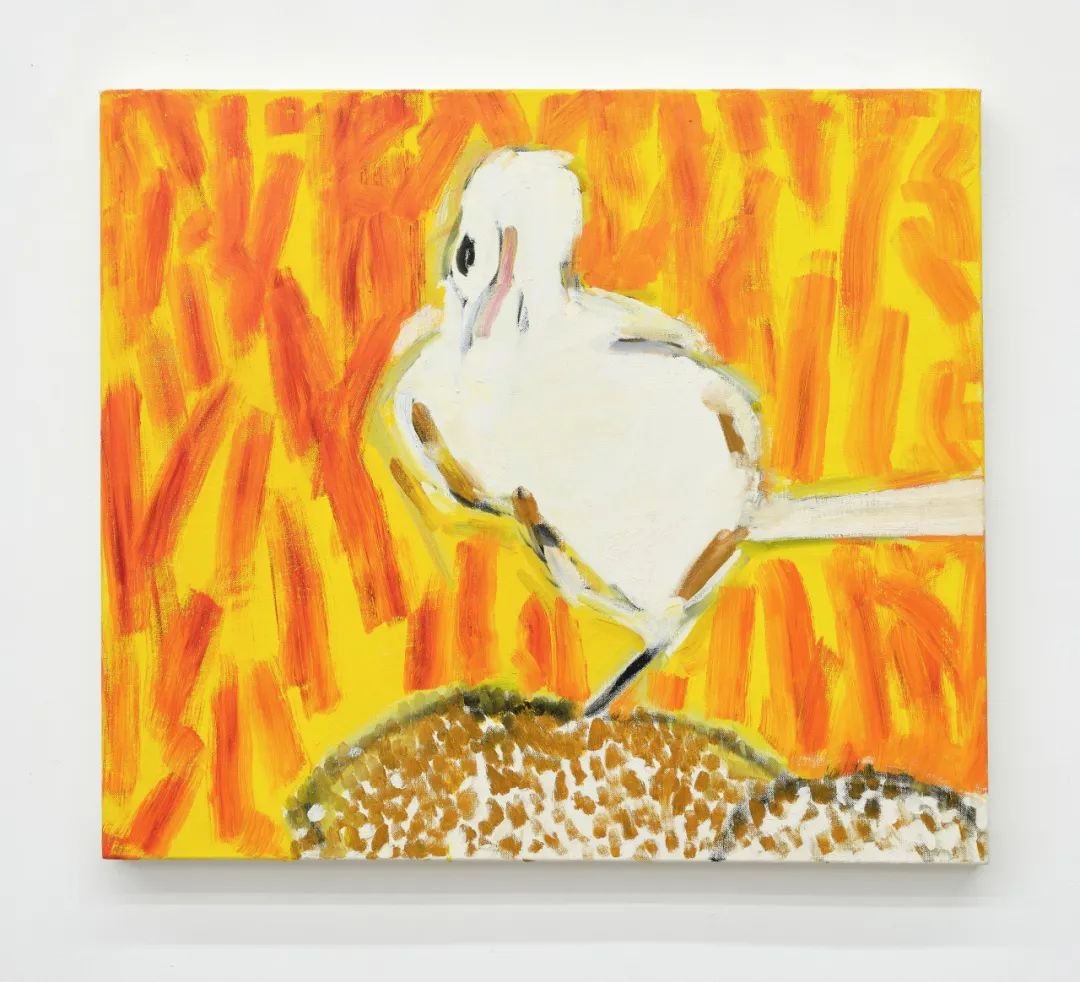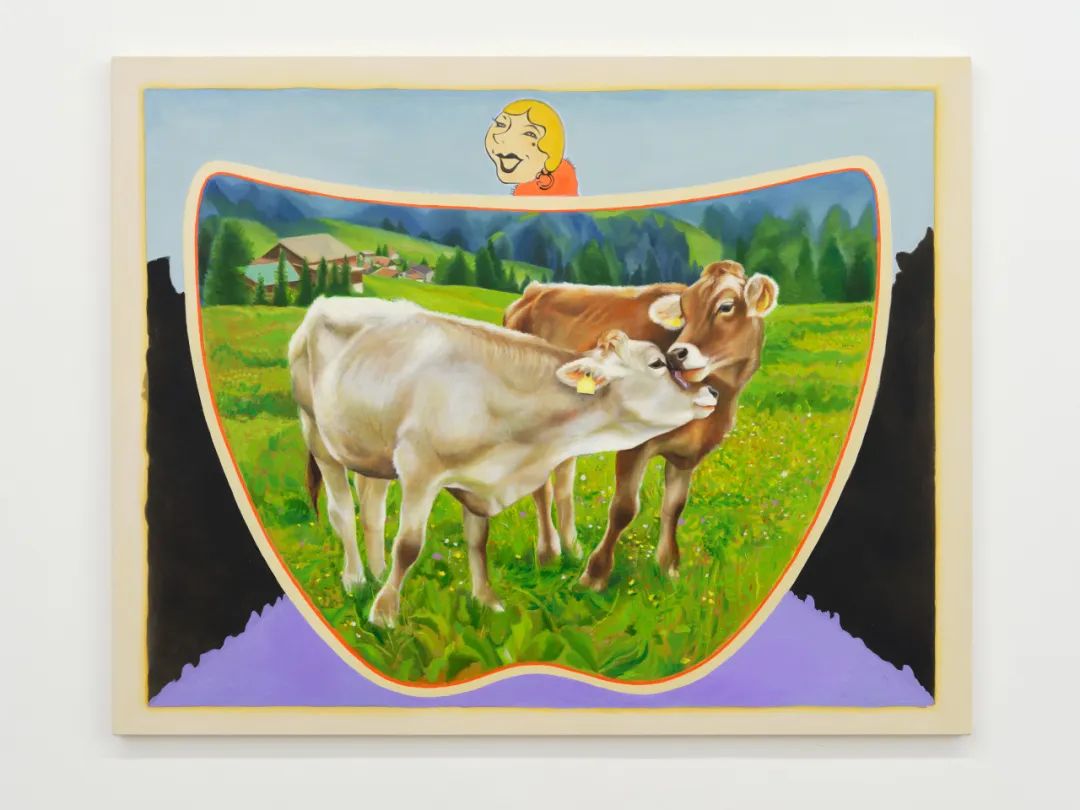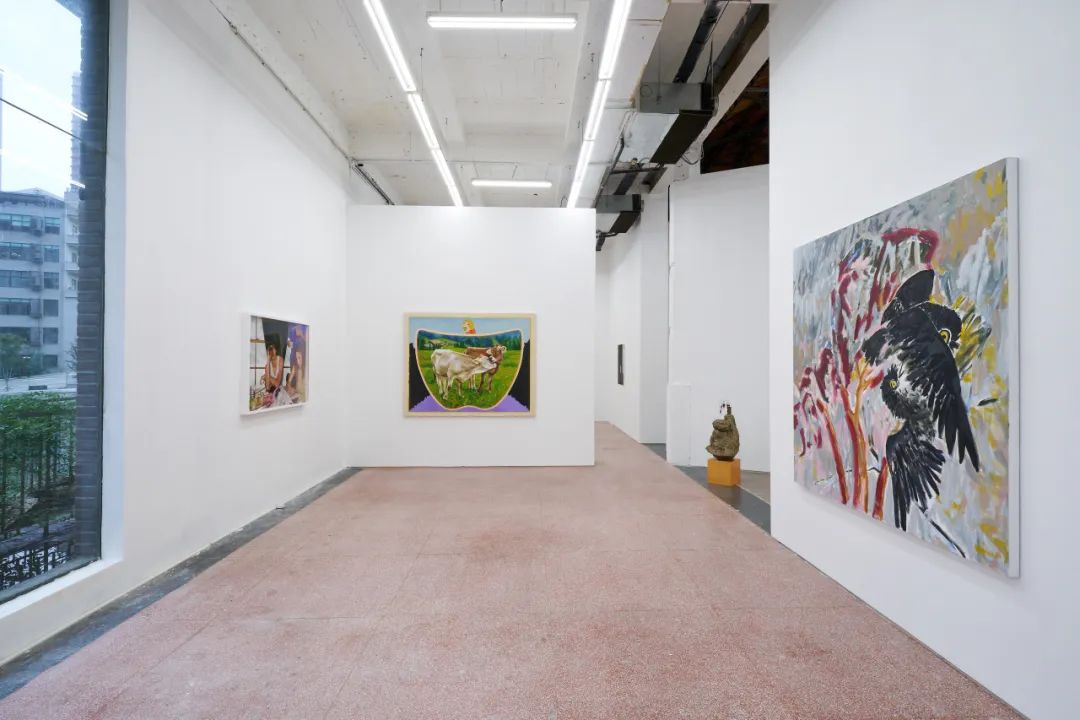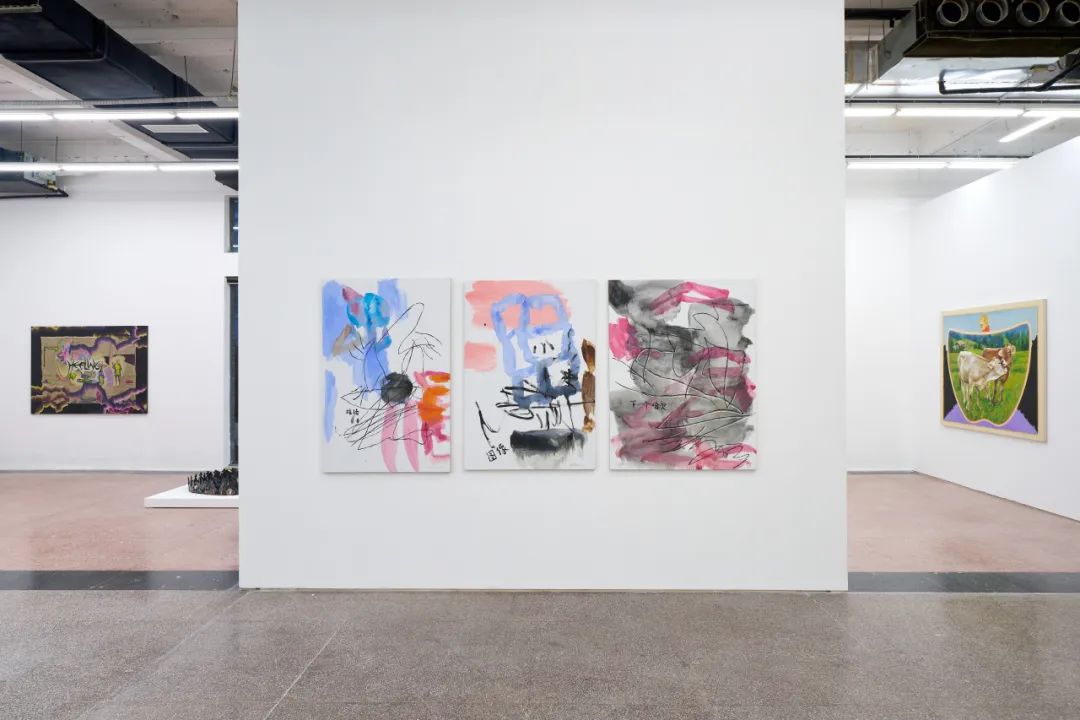![]()
|
「米修米修收到信号了吗」展览现场 Horizons: Is there anybody out there? Installation view Part 7&8 Words by curator Robin Peckham |
Exhibition Period | 展览时间
2023.9.16 – 10.21
Exhibition Address | 展览地点
天线空间 AntennaSpace
上海市莫干山路 50 号 17 号楼 202 室
Room 202, Building 17, No.50 Moganshan Rd. Shanghai
07
哥特风水墨与道家黑色电影
Gothic Ink, Taoist Noir
如果说,致力于严谨地与历史和地方性互动,可以产生像这样的重要概念锚点,为艺术家在持续实践中进一步建立提供支持,反过来说,有时候介入也可能真实的创造出场所性以及美学现实,也可以创造出同样意想不到的新的可能性。我在此关注一些将水墨画——其技巧、物质性、传统等参照——融入总是不断复返的哥特文化(19世纪的文学、70年代音乐,互联网时代的图形设计)。这涉及到各种不同的立场和方法:我们见过用哥特朋克阅读水墨身体表演,新文艺复兴绘画中运用中国文人画的元素,以及融合式的黑暗清代巴洛克室内装饰。与其讨论这些多样性实践背后的特定文化策略,我希望读者注意这些实践是有意为之,是我们在这些艺术家工作室中见证文化流动的反本质性。所有这些都不是“自然的”,因为这些艺术家未必是在调用内生的传统,而是在发现新的传统,找到自己的方法,并为他们所遇到的事物决定新的说法。
If the commitment to engage rigorously with place and history can lead to significant conceptual anchors like these, bulwarks upon which an artist can build further in his or her ongoing practice, then the opposite intervention can sometimes also be true: the fabrication of the site—of an aesthetic reality—can also create new possibilities, and equally unexpected ones. I am interested in a sensibility here that brings together some configuration of the techniques, materialities, traditions, or references of ink painting with the recurring cultural moments of the Gothic (be that nineteenth century literature, 1970s music, or internet-era graphic design). This involves a whole matrix of different positions and approaches: we have seen a goth-punk take on ink-based body performance, the inclusion of Chinese literati painting references in Renaissance revivalist painting, and the fusion of a dark Qing baroque interior decor. More than any particular goal or cultural strategy behind these diverse practices, I want to call attention to the intentionality of these practices, to the anti-essentialist nature of cultural fluidity that we witness in these artists’ studios. None of this is “natural,” in the sense that none of these artists find themselves necessarily working with built-in traditions; they are finding new ones, making their own ways, and deciding on new names for and translations for the things they land on.
「米修米修收到信号了吗」展览现场
| 为了更有历史纵深,我想以已故的艺术家于彭开始,他于1955年出生于战后的台北,这代艺术家往往来回穿梭在中国大陆和台湾之间,特别对20世纪离散和个体化映射出的复杂谱系以及改造中国文化传统充满浓厚兴趣。我们在这里展示两幅出自2000年代初的画作,反映了于彭对水墨风景传统的高度个人观点。第一幅作品《矫龙掩映处——如仙童》(2004)是全用浓墨绘制的密林或者花园;中心处从两根焦黑树干展开,根、枝、叶稍微向外分散开来。他的笔触绝非拙劣,只见各种皴法信手拈来:顶部岩石干擦,中间树叶如松针,前方人物则十足90年代。第二幅作品《花花世界》是一幅交错运用朱墨和黑墨的书画作品,一样有种浑沌的能量,并将其延伸到人物描绘上,以至于艺术家作品中反复出现的人类角色成了文字上真实的角色。 |
In order to start off from a quasi-historical grounding, I would like to begin with the late artist Yu Peng, who was born in postwar Taipei in 1955, part of a generation of artists who traveled back and forth between mainland and Taiwan with a keen interest in the evolution of Chinese cultural traditions through the complex genealogies of migration and individuation in the twentieth century. Here we have gathered two paintings, both from the early 2000s, that reflect Yu’s highly personal take on the ink landscape tradition. The first, The Place Where a Dashing Dragon Hides – as a Fairy (2004), is a densely planted garden or forest drafted fully through thick black ink; at the center, the blackest black of two tree trunks disperses only slightly to suggest roots, branches, and leaves. The brushwork is hardly clumsy but quotes at liberty from various traditions: dry brushed rocks at the top, pointillistic foliage at center, and 1990s figuration at front. The second painting, The Dazzling World (2004), is a calligraphic work in red and black, capturing the same chaotic energy and extending it into the bodies pictured, such that Yu’s recurring (human) characters become literal (textual) characters.
Yu Peng 于彭
The Dazzling World 花花世界
Ink and color on paper 纸本彩墨
121.1 x 42.6 cm
Yu Peng 于彭
The Place Where a Dashing Dragon Hides as a Fairy
矫龙掩映处 – 如仙童 , 2004
Ink on paper 纸本水墨
136.2 x 69.3 cm
| 在当代空间中自由借鉴水墨传统,这完全不是追求技巧和教条的“新水墨”等种种流派。接下来,我想谈谈刘慧德的作品,她的陶瓷作品长期以来一直与古代中国神话进行当代版本的回应。在这里,她展出了三件陶瓷浮雕作品,这在她的创作实践中是一个相对新的形式,搭配上越来越精美的上釉和着色。特别是在《Metamorphosis II》和《Movement Before Dusk》(均创作于2023年)中,我们可以读到对于彭肉欲暗黑潜能的回响,正如刘慧德以黑暗版水墨徜徉在新的物质领域当中,从而脱离陶瓷历史传统的束缚。 |
The stage is set, then, for a free appropriation of ink traditions within the contemporary space; this is not the technique-obsessed dogmatic world of “new ink” or other competing movements. I would like to propose next the work of Heidi Lau, whose work in ceramic and clay has long engaged with contemporary revisions of ancient Chinese mythological canons. Here she contributes three ceramic reliefs, a relatively new format in her practice, paired with an increasingly exquisite level of coloration and glazing. In Metamorphosis II and Movement before Dusk (both 2023) in particular, we might read an echo of the inky density of the fleshy pleasure gardens we saw in Yu Peng, as Lau draws the dark possibilities of ink into new material realms worlds away from the historical traditions of ceramics.
「米修米修收到信号了吗」展览现场
Heidi Lau 刘慧德
The Unvanquished 坚不可摧, 2023
Glazed ceramic 釉面陶瓷
35.6 x 27.9 x 15.2 cm
|
为了推进这一点,让我们切换美学风格,谈谈王伊芙苓韬程的作品《Friendship》(2023),它一方面是调用了美国的观念绘画传统,但同时也涉及华人社会和文人书画的背景。作为她整体项目的一部分,王伊芙苓韬程有时会扮演阿格尼丝·马丁(Agnes Martin)的主观视角,而这张画则是她试着“描摹”马丁在1963年的作品《Friendship》,这也是马丁少数用金箔做的几幅网格画,现藏于纽约现代艺术博物馆。一方面,王伊芙苓韬程忠实还原了作品的极少主义概念,不过,艺术家在金箔的左边和底边留有宽边,她用她个人化的书法英文写下了创作这幅作品的指令,并且落款、盖朱印,正如其他画家、学者和藏家在几世纪前的水墨画边上留下他们的想法一样。如此,艺术家让这块画布完全属于她个人,并且还俏皮地在稍微偏离中心的位置画了一个覆盆子馅饼。 |
Switching aesthetic gears in order to push this point, Evelyn Taocheng Wang’s Friendship (2023) resides fully in the space of the American conceptual painting milieu as well as the social context of Chinese literati painting and calligraphy. As part of her overall project, Wang sometimes inhabits the subject position of Agnes Martin, in this case in order to produce Martin’s 1963 work Friendship, one of a small number of grid paintings she executed in gold leaf, which sits in the collection of MoMA. Wang’s reproduction is faithfully minimal, except for a think white border along the left and bottom edges of the gold, where Wang has, in her trademark calligraphy—sharp cut English lettering in black ink, stamped with a red seal just above her signature—written out her instructions for making the work, just as fellow artists, scholars, and collectors might have left their thoughts in the margins of ink paintings in centuries past. Making this canvas fully her own, she has also cheekily painted in a raspberry tart just off center.
Evelyn Taocheng Wang 王伊芙苓韬程
Friendship 友谊, 2023
Gesso primer on linen canvas, embedded 24K gold leaf, acrylic, oil, ink and artist's seal 嵌入式 24K 金箔上丙烯,油彩,墨和艺术家印章,布面上石膏底料
195 x 195 cm
| 为免掉入潜在的文化本质主义陷阱,让我们转向艺术家双人组Daniel Dewar & Grégory Gicquel的作品,《Oak bench with 22 punctata beetles and snails》(2022)位于这个展厅的中心。这件作品是个无可定论的物件——作为雕塑看起来太实用了,但作为长凳却又太小,没法坐——如此,它作为木制基座向我们呈现出怪异与华丽之感,上面镶嵌着同木材雕刻出的蜗牛,以及用五彩斑斓的甲虫刺绣的枕状松软雕塑。这些寓言式的动物,唤回了我们在展览中看过的一些风景传统,通过其图腾式的动物灵魂,使家具变得生动起来,就像人体通过亲密的互动,将雕塑变成了家具。 |
Lest we get caught up in the potential cultural essentialism of all this, I would like to turn to the work of Daniel Dewar & Grégory Gicquel, whose Oak bench with 22 punctata beetles and snails (2022) sits at the heart of this room. An indeterminate object—too useful-looking to read as sculpture, too small to function properly as a bench—this thing offers itself up to as as viewers as a kind of weirdly ornate wooden pedestal studded with snails carved out of the same wood and a flaccid sculpture displayed on top of it in the form of a pillow embroidered with colorful beetles. This bestiary recalls the landscape traditions we see elsewhere here, making the furniture alive through its totemic animal spirits in much the same way that the human body turns sculpture into furniture through intimate interactions.
Daniel Dewar & Grégory Gicquel
丹尼尔·杜瓦 & 格雷戈里·吉奎尔
Oak bench with 22 punctata beetles and snails
有 22 只葡萄丽金龟和蜗牛的长凳, 2022
Embroidery on cushion, oak wood
软垫上刺绣,橡木
60 x 88 x 68 cm
| 同样在文化地域和动植物世界来回穿梭的李泳翔则呈现了一件纸上小作品,也是为了进行中的绘画所作的一件素描。《Study for "Intestinal Demonstration and a Catastrophe"》(2023)由四块带铰链及手柄的木板绘画组成,可以折叠安插在展台一旁,并且模仿了边柜的形态——这再次体现了将绘画视为建筑,将绘画视为神圣空间内的寄生结构,也意味着将家具转化为风景。镜像的构图,灵感来自艺术家最喜欢的绘画之一:尼古拉斯·普桑(Nicolas Poussin)的《Landscape with a Man Killed by a Snake》(约1648)。在这里,主题人物结合了内脏爆开的感受,并被壮硕蛇形所包围,而他的所有行为,却都被远处宁静的建筑形式所抵消。李泳翔用带着中国山水画传统的笔触,尤其是绘制树木和山丘的皴法,当他需要为画面戏剧性来确立黑暗调子,则会运用欧洲的主题。 |
Similarly moving across cultural geographies and the kingdoms Plantae and Animalia, Yong Xiang Li contributes a small work on paper, a study for a painting still in progress. Study for "Intestinal Demonstration and a Catastrophe" (2023) consists of four wood panels with hinges and handles intended to be folded around a plinth in imitation of a sideboard—again the interest in painting as architecture, as parasite or structure within sacred space, that turns furniture into landscape. The composition is mirrored, drawing inspiration from one of the artist’s favorite paintings: Nicolas Poussin’s Landscape with a Man Killed by a Snake (ca. 1648). Here the titular man is joined by another figure experiencing a kind of intestinal explosion, wrapped in another muscular serpentine form, while all of his human action is offset by the placid architectural forms in the distance. Li handles his brushwork with explicit references to the Chinese landscape tradition, particularly the trees and hills, borrowing European subject matter when it becomes necessary to claim a certain darkness within the drama of the picture.
Yong Xiang Li 李泳翔
Study for "Intestinal Demonstration and a Catastrophe"
肛肠尽现及一个灾难 , 2023
Acrylic on paper 纸上丙烯
40.5 x 30 cm
| 让我们继续停在感觉的领域,雕塑天赋极高的尉洪磊有能耐让每个物件都变成在三维空间中作用的形式奇迹,同时又要求我们在二维中再次进行反刍;我相信,尉洪磊是我们这个时代为数不多能够在图像和物件之间无缝移动的艺术家,他以流利的方式,将一个领域的视觉瞬间转化到另一个领域。《,#3》(2018)是一组用粗糙黄铜制作的雕塑,上面覆盖着纸质辣椒,看起来像数字图标(会不会是推特的小鸟标志?)被放大制作,逆向钻回时间中,经过历史的拖曳,积累了身体衰老的痕迹,最终又落在这里,一个只能在这个特定时刻出现的想象之作,但对我们来说却显得永恒。 |
Remaining in the realm of the senses, Yu Honglei’s work is that of a preternaturally talented sculptor, every object a formal miracle that functions in our embodied experience of three dimensions even as it demands to be read again in two; Yu is, I believe, one of the few artists of our era able to move seamlessly between the image and the object, translating visual moments from one to the other with fluency. ,#3 (2018), one of a suite of sculptures in rough brass topped with paper chili peppers, reads like a digital icon—is that the Twitter bird?—made monumental, sent backwards in time and then dragged through history accumulating traces of the body’s experience of aging only to land here again, a product of an imagination that could only come to exist in this particular moment and yet appears to us as timeless.
Yu Honglei 尉洪磊
#3, 2018
Brass, stainless steel, iron wire, paper, millet rice
黄铜,不锈钢,铁丝,纸,小米
97 x 39 x 57 cm
| 这一章必须如此结束:在黑暗窗前独抽香烟,凝视着深夜的寂静。程心怡的作品《毛玻璃》(2023)可视为一张双重自画像,吸烟者微微侧的脸清晰可见,并以微小稍显模糊的形象,再次出现在窗户的反射中,两张面孔都被她的火柴或打火机的火焰所照亮。尽管有反射,窗户的其他部分仍然漆黑一团。夜是深邃的。她没有嘴巴;香烟是唯一的目的。在反射中,她的眼镜明显可见,但在前方的那张脸上,镜片却失去了焦点,两个模糊的虚空专注于如此近在眼前的一切和虚无的体验。 |
This chapter closes as it must: with an introspective cigarette smoked alone against a dark window looking out into the dead of night. Cheng Xinyi’s Frosted Window (2023) reads as a double self-portrait, the face of the smoker visible in the flesh in three-quarters view and again, miniaturized and slightly muddled, in her reflection in the window, illuminated in both cases by the flame of her match or lighter. Despite the reflection, the rest of the window is a dark matte black. This night is deep. She has no mouth; the cigarette is its only function. Where her glasses are clearly evident in the reflection, on her larger face their lenses lose focus, two clouded voids intent on the experience of everything and nothing that sits so close at hand.
Xinyi Cheng 程心怡
Frosted Window 毛玻璃, 2023
Oil on canvas 布面油彩
90 x 70 cm
08
绘画作为绘画
Painting qua Painting
到目前为止,我们已经讨论到了各种不同地区和世代的艺术家在文化上的感性、趋势、意图以及其潜意识。进入展览最后一个展厅,我们转向思考当代艺术中的流派、媒介和主题所起到的作用。显然,这也让讨论变成了一个关于绘画的故事;我相信,此处所汇集的画家都特别注重如何运用象征符码,从而回应他或她之于绘画媒介以及绘画史的关系,这与我们迄今在展览中看到绘画在其他背景下的调用,形成了鲜明对比。在此,我们与媒介较量,选择直面其符号的接受方式,而不是另辟替代蹊径。最重要的是,这些作品要求我们仔细、认真地观察,并且,要拒绝将经验感性化或知识化的诱惑。这里与展览的开场章节有其对称关系,首章教会我们如何结合隐喻来观看;在这里,我们被要求从其表面、从实际和技术的角度观看,从而弄清作品的运作方式,弄清这里到底在发生什么,然后再将这点认识带回到美术馆的其他展厅中,重新观看其他的作品。
So far we have engaged with sensibilities, tendencies, intentions, and the subconscious parameters of culture across territories and generations. Moving into the final room of the exhibition, we turn to consider the role that genre, medium, and subject matter play in contemporary art. This ostensibly becomes a story about painting; I believe there is a particularity to the painters gathered here, where symbolic codes are deployed as the terrain across which the artist works out his or her relationship to the medium and its history, all of which is in stark contrast to the other contexts in which we have seen painting deployed across this exhibition so far. Here we are grappling with the medium, choosing to engage with its received codes rather than carving out alternative modalities. Above all else these works demand of us that we look, closely and carefully, and that we fend off the temptation to either sensualize or intellectualize our experience. There is a symmetry here with the opening chapter of the exhibition, which taught us to look in a metaphorical sense; here we asked to look literally, pragmatically, and technically, to figure out how the works work—to figure out what is really going on here—and then to take this back with us as we retrace our steps through the gallery.
「米修米修收到信号了吗」展览现场
|
Stanislava Kovalcikova的《Untitled》(2023)描绘了一组滑溜溜的飞机,仿佛行将从画面上颓倾滑落。眼睛从银色薄雾中探出头来,而耳朵则长在细长的绿色根茎上。Kovalcikova近期才在同一个空间中举行了她的个展,并施展魔法将此处改造为时间冻结的黄昏一瞬,其画面更是让人坐立难安,充满魔力、奇迹和动荡。在此,她则安插了一个微型的魔幻时刻,从画作内部对我们的世界展开观察。 |
The small painting, one Untitled (2023) by Stanislava Kovalcikova, presents a slippery set of planes that seem to be at risk of collapsing into one another or sliding off the surface of the picture entirely. Eyes peek out from a silvery shroud of mist, while ears grow atop thinly rooted green stems. Kovalcikova’s recent solo exhibition worked a piece of wizardry on this same exhibition space, transforming it into a permanent oblique slice of the golden hour and filling it with disturbingly charged paintings dripping with magic and wonder and turbulence. Here she inserts a witching hour in miniature, a view into our world from inside of the painting.
Stanislava Kovalcikova 斯坦尼斯拉娃·科瓦奇科娃
Untitled 无题 , 2023
Encaustic decoupage on copper plate 铜板上浮雕拼贴绘画
22.5 x 24 cm
Stanislava Kovalcikova 斯坦尼斯拉娃·科瓦奇科娃
Untitled 无题 , 2023
Oil and silver leaf on panel 木板上油彩和银箔
55 x 69.5 cm
|
遇到Buck Ellison的三件作品,或许会有人因为这章标题而认为这些作品或许有些误导的嫌疑,因为,它们显然根本不是绘画。然而,他的摄影作品与媒介的陈规俗套和惯例密切相关,正是通过媒介和类型的融合,我发现了与绘画之间如此有趣的关系。在Ellison的作品中玩味的正是类型的叠加,摄影中的家庭肖像/真实的家庭快照类型,叠加了人类阶层中,美国东北上层中产预备学校圈子这样的类型。每张照片的每个元素都经过计算,在图像中发挥建构性的作用,每一件服装,每一个道具,每一个手势都有其双重意义。然而,作品体现了一种强烈的自然主义,使得它们的构造性质既是不言而喻的,也是不可避免的,因为在这个背景下,摆拍和自然拍摄在内在上被视为一体同源。摄影师扮演了他的主体,反之亦然。 |
Entering the space we first encounter three works by Buck Ellison, which seem like something of a red herring given the title of the chapter because they are, emphatically, not paintings at all. His photography is deeply engaged with the tropes and conventions of its medium, and it is through their melding of medium and genre that I find such an interesting relationship to painting. In Ellison’s work there is a doubling of genre, a layering of the photographic genre (the family portrait/ candid family snapshot) over the top of the human genre (the upper middle class northeastern prep school world). Every element of every photograph is calculated to play a role in constructing the image in both senses: every garment, every prop, every gesture. And yet there is an intense naturalism to the work, such that their constructed nature is both self-evident and unavoidable, because the posed and the candid are, in this context, implicitly known to be one and the same. The photographer does the work of his subject, and vice versa.
Buck Ellison 巴克·埃里森
Stable Marriage Problem 稳定婚姻问题, 2023
Archival pigment print 收藏级颜料印刷
91.4 x 129.5 cm
|
Matthew Lutz Kinoy的两幅纪念碑式的具象绘画从互文参照中确立其主题,也将人体引向完全不同的方向,清空了所有这些社会规范,从而暗示了它的文学和身体性的维度。《River》(2022)引用了保罗·卡德姆斯(Paul Cadmus)大萧条时期最具标志性和高度争议的同志题材,而《Blue after Baltrop》(2019)则借鉴了摄影师巴特鲁普在19世纪70和80年代的纽约公园记录下的幽会文化。而Matthew Lutz Kinoy的绘画诠释则将人体视为一个地理空间,也是一个标志,既是要被绘制成地图的对象,又是地图本身。他以模板构图的方式进行的独特平面化技巧与纸张拼贴共享,将色彩平面交叉组合在浅显的阴影和深度游戏中。展览筹备之初,我是希望能够展出Matthew Lutz Kinoy的鸟类绘画,让展览有一个动物性象征语言的脉络,不过事与愿违,我不得不转而看到此处所呈现的,身体的象征秩序——在我们将身体分解为建筑场域之后,复又进行了重新构建。 |
Two monumental figurative paintings by Matthew Lutz-Kinoy draw on intertextual references for their subject matter, pushing the human body in different directions entirely to empty out all of these social codes and instead allude to its literary and carnal dimensions. River (2022) quotes Paul Cadmus’s iconic and controversial Depression-era male homoeroticism, while Blue after Baltrop (2019) borrows its homosexual embrace from the New York cruising culture documented by the titular artist from the 1970s-80s. In Lutz-Kinoy’s treatment, the human body becomes both a geography and an icon, something to be mapped and the map itself. His trademark flattening through stencil composition shares its technique with paper collage, leaving planes of color to intersect in a play of shallow shading and depth. I had initially hoped to exhibit Lutz-Kinoy’s bird paintings, finding an interesting resonance in the symbolic language of the bestiary, but stymied in that sense I am forced instead to recognize the symbolic order of the body as it is catalogued here—reconstituted, perhaps, after we have seen it broken down into the architectural field.
Matthew Lutz Kinoy 马修·卢茨 – 基诺伊
River 河流 , 2022
Acrylic on canvas 布面丙烯
370 x 250 cm
| 谁又能想到,我们竟在赵刚的作品中,重新又回到了鸟类动物。在此,鸟类纯粹是发动笔触的载体。当然,这样的说法几乎可以套用在他过去十几年间各类绘画:假山石、女体、火腿肉、中国知识分子、盛开的植物、自画像。作为一名画家,赵刚将他自己的绘画工作室视为凝结、折射外部世界的过渡空间,因此,他非常信任自己作品真实描绘周边历史现实的能力。这是一种激进而超越性的经验论,其中,无论是书籍阅读中,或者自娱自乐的幻想中所升起的心理图像,它们之于画架前的景物被赋予同等的重要性;正是如此,我相信,这使赵刚得以无限接近纯粹绘画的概念(尽管概念这词不无误区)。这里的两幅鸟类动物画作:《假期6号》(2022)和《鸟人》(2023),恰是如此:它们是象征语言的符号和载体,并且也中性地栖居于浑沌之中。 |
Ironically, we arrive at the birds, finally, in the work of Zhao Gang, for whom they become vehicles for pure brushwork. The same could be said for nearly all of his work across genres in the past decade or so: scholar’s rocks, female nudes, hocks of ham, Chinese intellectuals, plants in flower, self-portrait. A painter’s painter, Zhao looks at his own studio as a site of the compression and refraction of the world around him, and therefore trusts his work—more or less—as an honest picture of the historical reality around him. This is a radical if not transcendental empiricism in which physical objects in view of the easel hold the exact same weight as mental images that emerge in reading a book or entertaining an idle fantasy; I believe this positions Zhao’s work as close to the (perhaps misleading) concept of pure painting as it is possible to come. The two bird pictures here, Vacation No.6 (2022) and Bird Man (2023), are precisely such objects: symbols and carriers of symbolic language, chaotically neutral inhabitants of consciousness.
Zhao Gang 赵刚
Vacation No.6 假期 6 号 , 2022
Oil on canvas 布面油彩
180 x 180 cm
Zhao Gang 赵刚
Bird Man 鸟人 , 2023
Oil on canvas 布面油彩
50 x 60 cm
| 我们已经说到以羽毛作为笔触的案例,现在,我们已经做足准备,从而审视谢南星的《旅行手册》(2023),一幅散放的三联画。其中的每张画都描绘了艺术家在北京工作室中的同一把摇椅,并且大量引用了约瑟夫·科苏斯(Joseph Kosuth)的《One and Three Chairs》(1965)概念,谢南星轻轻调侃当代观众对于这些象征概念的驾轻就熟,却不愿意或已无法仔细观察绘画,弄清楚画面上的实际情况。在左侧的画面中是以细黑线简笔勾勒出来的摇椅,而黑色的坑则标志其座位的重心——看来,这完全是一幅肖像画;左下角写着“摇椅”。在中间的画面中,线条加粗,我们作为观众的视角也被颠覆,使我们失去了参照点;眼睛则容易停留在后方的工作室舷窗上。左下角的两个字写着“图像”,线条比之前更粗。在右侧的画面中,摇椅的黑线再次变细,加重用的白线与后方底色打着配合,五字写着“下一个哈欠”。现在夜已经深了,这里的文字巧妙的误导我们,从而那些更愿意看到“图像”而不是“事物本身”的人送出门,如此而已。说到底,谢南星希望我们看到的是他在这些绘画构造中找到的愉悦感:这些底色实际上是笔刷绘制而成;那些匆匆的线条实际上是一个个段落一点一点仔细画的——永远都有第二幅画,第三幅画,隐藏在第一幅画的背后,供那些愿意仔细观察的人来看。 |
Having learned to read feathers as brushwork, we are as prepared as we will ever be to examine Xie Nanxing’s Travel Brochures (2023), a triptych of loose compositions on canvas. Each panel depicts the same rocking chair that sits in the artist’s Beijing studio, quoting liberally from Joseph Kosuth’s One and Three Chairs (1965), and Xie gently pokes fun at the seeming ease with which the contemporary viewer is able to grasp semiotic concepts like these while remaining unwilling or unable to look closely at painting and figure out what is actually happening therein. In the panel at left, the chair is hastily sketched in thin black lines, while a black pit marks a center of gravity on its seat—this is a portrait; two characters at lower left read “rocking chair.” In the middle panel, lines thicken and our perspective as viewers is shaken up, leaving us without a point of reference; the eye lands most easily instead on the studio window at rear. Two characters at lower left, again thicker than previously, read “image.” In the panel at right, the black lines of the rocking chair are thin again, but doubled with white, and they work in tandem with the wash in the rear ground. Four characters read “the next yawn.” It is night. I believe the text here is a handy bit of misdirection, a way to send on their way those who would prefer to see “the image” opposed to “the thing itself” and leave it at that. What Xie needs us to see, ultimately, is the jouissance he finds in the constructions of these paintings: that the wash is actually brushed; that those hasty lines are actually painstakingly drawn out one segment at a time—that, always, there is a second painting, a third painting, hiding behind the first one, for those who care to look.
Xie Nanxing 谢南星
Travel Brochures 旅行手册 , 2020
Oil on canvas 布面油彩
133.5 x 88.5 cm; 130 x 90 cm; 130 x 100 cm
| 最后一幅画是Allison Katz的《Milky Way》(2022),她的作品值得多层次的阅读观看,与之相比,它在一块托盘上呈现出来。在画面中心,田园风光的阿尔卑斯牧场上,一头奶牛正舔舐着另一头奶牛的脸。Katz对画框的运用非常广泛,光是这幅图像的边缘就能看到好几个框的架构:奶牛被嵌在一个碗形剪影中,这是艺术家近期用过的嘴形框的回响,上面则有个锯齿抽象色域(回应着克莱福特·斯蒂尔,即Clyfford Still),其本身进一步被一个黄色矩形外框嵌套在其中,让画布边缘留下了一个负空间。在色域上方的蓝色部位出现了一个老能见到的艺术家标志性的图像替身,她正在自己的笑话中放声大笑,并且看着这一过程。用Katz的说法,牛奶可能具有母性的一面,特别是指母亲养育的方面,这点也回应了艺术家参加的2022年威尼斯双年展“梦想之乳”——展览集中关注女性和超现实主义这两个支柱,标题取自艺术家利奥诺拉·卡林顿(Leonora Carrington)的儿童绘本。(其中一页听上去就像是在描述Katz的嵌套框架:“这是三个盒子:绿色的,粉色的,里面有一个小盒子,它会咬人。”)不过,回到我们的导览,我们在此需要将这个标题适当地放回作为星星的参考点。是时候收起我们的望远镜,回到我们刚开始所经历的那个寒冷、黑暗的外太空了。 |
A final painting, Allison Katz’s Milky Way (2022), rewards layered viewing and, by comparison, offers itself up on a platter. At the center, one dairy cow licks the face of another in a pastoral Alpine meadow. Katz works extensively with framing devices, and on the periphery of this image there are several: the cows are ensconced within a bowl-shaped silhouette, an echo of the mouth-shaped frames that the artist has used recently, beyond which a jagged abstract field (echoes of Clyfford Still) is itself constrained within a further rectangular yellow frame leaving negative space around the edges of the canvas. In the upper blue component of the field, an old-fashioned avatar of the artist appears, a laughing visage in on her own joke and keeping watch over the proceedings. In Katz’s vocabulary, milk might take on a maternal aspect, alluding in particular to the functional aspects of motherhood, but it also speaks to the artist’s inclusion in Cecilia Alemani’s Venice Biennale exhibition “Milk of Dreams,” which focused on twin pillars of women and surrealism and was titled after Leonora Carrington’s children’s book. (One page sounds like it might be describing Katz’s nested frames: “Here are the three boxes: the Green, the Pink, and the little box inside that bites.”) For our purposes, however, we will need to appropriate this title as a reference to the stars, because it is time to pack up our telescopes and return to the cold, dark reaches of outer space from whence we came.
Allison Katz 艾丽森·卡茨
Milky Way 银河, 2022
Oil and acrylic on canvas 布面油彩和丙烯
150 x 190 cm
「米修米修收到信号了吗」展览现场
尾声
Coda
我们在这里告一个段落。回顾整个展览,按顺序从头到尾说起来,展览所带出的观点涉及一系列观看的策略、工具、技巧和技术——近距离观看、慢慢看、仔细看、坚定地看、向内看、回顾性地看、带感情的看、超然的看、带着共鸣看、用心看、带着信仰观看、带着希望观看。或许更重要的是,这也是一个请求,请求我们继续寻找那些似乎从未到来的信号,并请求我们继续将信号发出去。这是我们的信仰之跃:如果我们在这里,希望能够得到回应,那么也许在外面有其他人,也在希望能够从我们这里得到回应。这也是我们继续实践的原因。展览如婚姻,通常是一种浑沌系统:刚开始,一切都顺利,直到发生了一些小差错,一些不平衡,将事情推离轨道,各种不可预测的元素纷至沓来,然后在无休止的循环中进一步引发不可预测的结果。每个展览都是一个与失败妥协的过程,但回顾的重点不在于推想是什么改变了项目进程。这个问题没有答案。它从一开始就包含了这些转折点;变化是其本质的一部分。重点在于理解它的可能性,而不是它本该是什么样。
We end here. Looking back over the exhibition, I see that what we have made of it is, from start to finish, a collection of strategies, tools, techniques, and technologies for looking—looking closely, looking slowly, looking carefully, looking determinedly, looking inward, looking backward, looking with feeling, looking with detachment, looking with empathy, looking with heart, looking with faith, looking with hope. It is also, perhaps even more importantly, a plea to keep looking for the signals that never seem to come, and a plea to keep sending them back out. This is our leap of faith: if we are here, hoping to hear back, then perhaps there is someone else out there, hoping to hear from us. This is why we keep doing what we are doing. Exhibitions, like families, like summer storms, like marriages, often function as chaotic systems in which everything proceeds apace until imbalances and asymmetries and mistakes push them off axis and introduce all kinds of unpredictable elements that then invite further unpredictable outcomes in an endless cycle. Every exhibition is a process of coming to terms with failure, but the point of looking backward is not to speculate on what it was that changed the course of the project. There is no answer to this question. It contains within it these points of inflection from the very beginning; they are part and parcel of its being. The point is to understand not what it might have been, but rather what it could still become.
「米修米修收到信号了吗」展览现场
外面有人吗?当我们迎接这样的习惯,并问出这一句话的时候——你能听到我说话吗?有人在吗?——这不是出于绝望,而是是一种创造行为。这件事情应作如是观:无论我们是在封闭的房间里独自弹吉他,还是用星形天线对着天空叫喊,从根本上来说,这种创造性行为意味着一种入世的态度。一根天线可以收发一声号召革命的呼唤;一首情歌;一个坐标;一个到期日;一次史诗般的吟诵;一份书目记录;填字游戏的答案;通往宝藏的地图;一次降神仪式的祈求;一条街道地址;一个物种鉴定;一则入睡故事;一个商品货号;真相;一个家族谱系;磁共振成像;误导性的布道;使用手册;翻译;乐谱;年鉴肖像;食谱;生日卡片;针织图案;自言自语;自制有声书;日记条目;推销文案;军事史讲座;伟大的美国小说;歌剧剧本;治疗课;股票代码;一首关于失败的短诗;推荐的膳食摄入量;专有算法;一点无用的琐事;梦的解析;工作清单;平面图;新闻稿;画册图录;邀请函;家书。想你,想你。
Is there anybody out there? When we embrace the costume and ask the question—Can you hear me? Is there anyone there?—it comes as an act of creation rather than an act of desperation. This is what we are doing: whether we are noodling on the guitar alone in a closed-off room or shouting at the sky with our star-shaped antennae, the creative act is a fundamentally pro-social transmission. An antenna is capable of sending and receiving a call to revolution; a love song; a location coordinate; an expiration date; an epic recitation; a bibliographic record; the answers to the crossword; a map to the treasure; an invocation to seance; a street address; a species identification; a bedtime story; a SKU code; the truth; a family tree; an MRI; a misleading sermon; an instruction manual; a translation; a score; a yearbook portrait; a recipe; a birthday card; a knitting pattern; a note to self; a self-help book on tape; a journal entry; a pitch deck; a lecture on military history; the Great American novel; a libretto; a therapy session; stock tickers; a short poem on defeat; recommended dietary allowances; a proprietary algorithm; a bit of useless trivia; a dream interpretation; a worklist; a floorplan; a press release; a catalogue; an invitation; a letter home. Miss you miss you.
文字翻译:陈玺安
图片致谢艺术家及天线空间
摄影:Cra
©文章版权归属原创作者,如有侵权请后台联系删除
